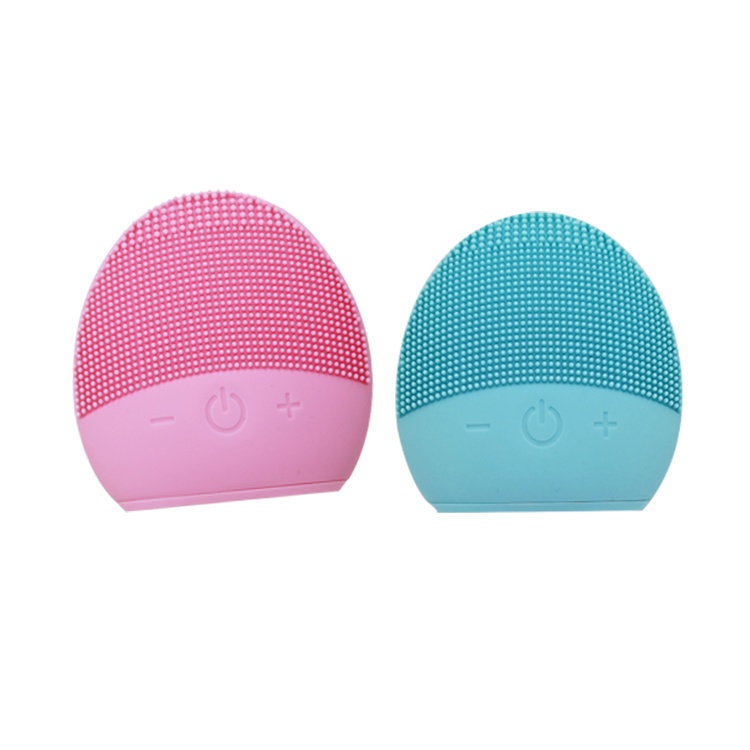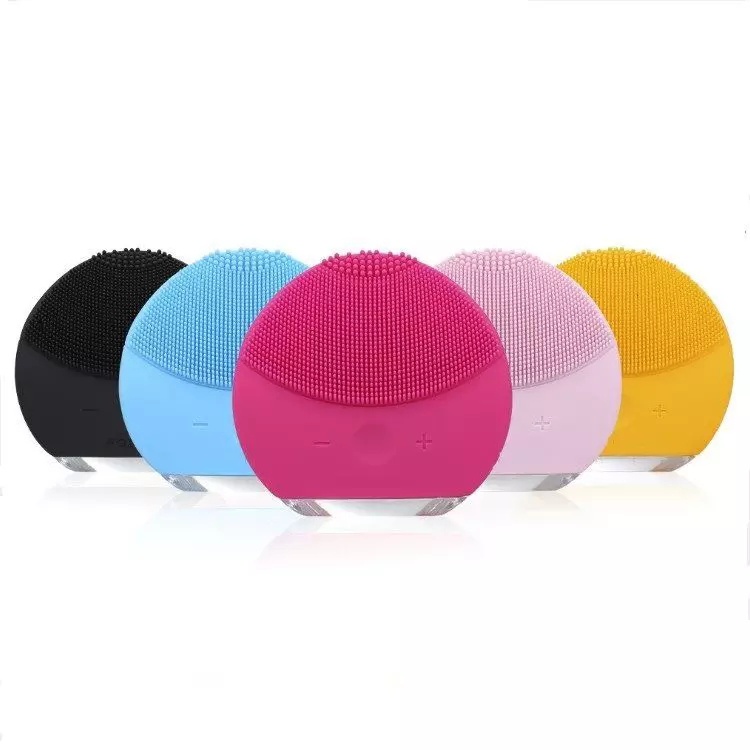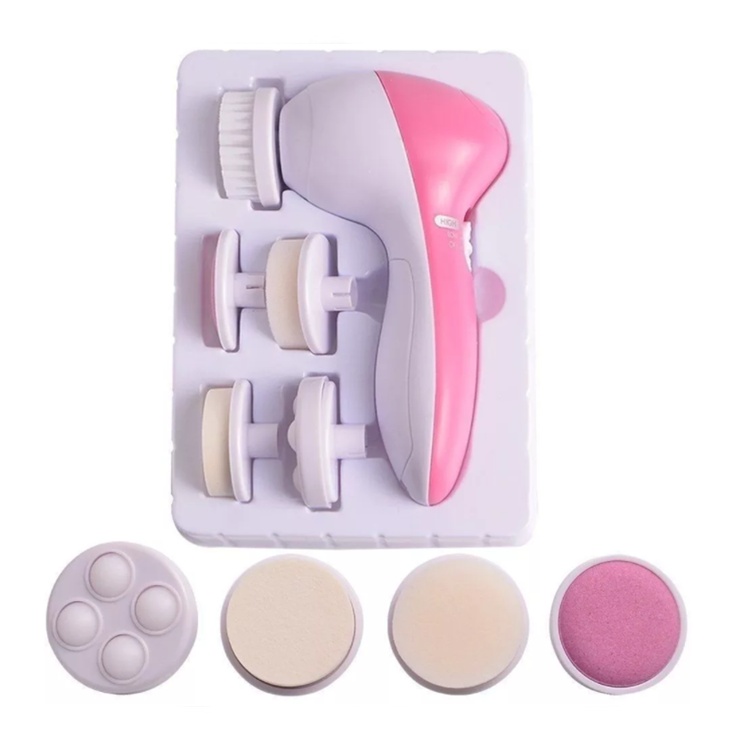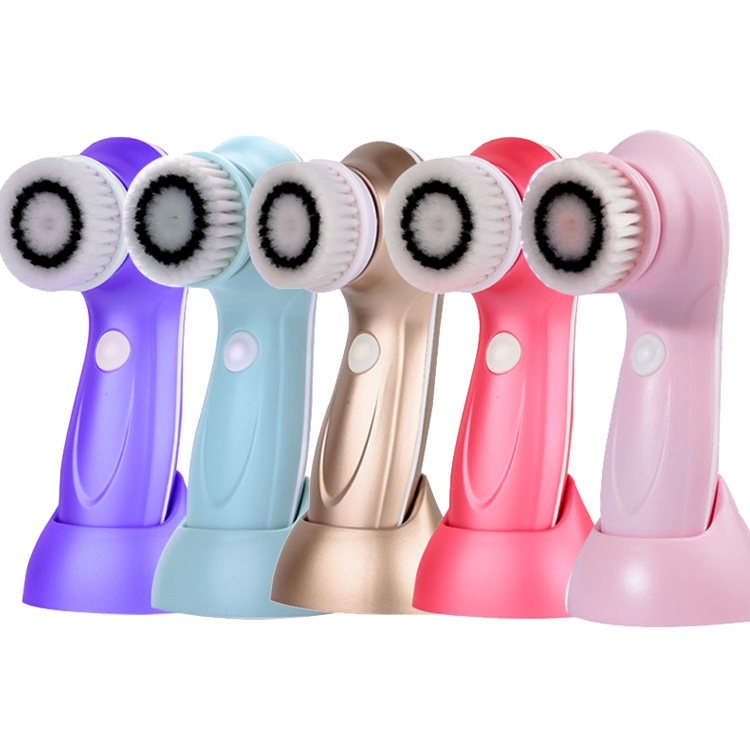How Often Should You Use a Facial Cleaning Brush on Sensitive Skin
Summary
Facial cleansing brushes are increasingly popular tools in skincare routines, designed to provide a deeper clean than traditional methods, particularly for individuals with various skin types, including sensitive skin. These brushes come in different forms, including manual, rotating, vibrating, silicone, and hybrid options, each catering to specific cleansing needs. Notably, while these devices can enhance skin texture and improve product absorption, their usage requires careful consideration, especially for those with sensitive skin, to avoid potential irritation and adverse reactions.
The notable benefits of facial cleansing brushes include enhanced cleansing efficiency, gentle exfoliation, and improved absorption of skincare products. However, for sensitive skin, overuse can lead to irritation, redness, and discomfort, making it crucial for users to limit their frequency of use—generally recommended to once or twice a week. Selecting the right brush type, bristle softness, and compatible cleansers is vital for maintaining skin health, as improper usage can disrupt the skin's natural barrier.
Controversies surrounding facial cleansing brushes often revolve around their effectiveness versus traditional cleansing methods and the risk of over-exfoliation. Critics argue that while they offer some benefits, many individuals may achieve adequate cleansing through gentler methods, emphasizing that not all skin types respond positively to such mechanical tools. Ultimately, the incorporation of facial cleansing brushes into skincare regimens should be approached with caution and personalized based on individual skin sensitivity and conditions.
In summary, while facial cleansing brushes can provide significant benefits for skincare, their use on sensitive skin necessitates a cautious approach, prioritizing gentle techniques, appropriate product selection, and awareness of skin responses to ensure a balanced and healthy routine.
Types of Facial Cleansing Brushes
Facial cleansing brushes come in various forms, each designed to cater to different skin types and cleansing needs. Understanding the distinctions between these types can help users make informed choices for their skincare routines.
Manual Brushes Manual facial cleansing brushes are straightforward tools that require the user to apply physical effort for cleansing. These brushes allow for a degree of control over pressure and speed, making them an affordable option for users. However, they may not provide as deep a clean as electronic versions and can feel rough on sensitive skin if used improperly.
Rotating Brushes Rotating facial cleansing brushes feature spinning bristles that offer a deep exfoliation. They are particularly effective for oily and combination skin types, but they may be harsh for individuals with sensitive skin. Users need to be cautious, as improper use can lead to skin irritation. Additionally, the brush heads require regular replacement to maintain effectiveness and hygiene.
Vibrating Brushes Vibrating brushes utilize quick sonic vibrations to cleanse the skin without rotating. This gentle action makes them suitable for most skin types, including sensitive skin. Vibrating brushes are often pricier than manual brushes but tend to provide a thorough yet gentle clean. Like rotating brushes, it's important to choose a brush head that matches your skin type to prevent irritation.
Silicone Brushes Silicone facial cleansing brushes are designed with soft silicone bristles, making them an excellent choice for sensitive skin. These brushes are easy to clean and tend to harbor fewer bacteria compared to traditional bristle brushes. They offer a gentle cleansing experience while effectively removing dirt and makeup. As with other types, users should start with a gentle routine and increase usage based on their skin's response.
Hybrid Brushes Hybrid brushes combine features from both rotating and vibrating technologies, offering a versatile cleansing option. They can provide a deep clean while still being gentle on the skin, depending on their settings and design. These brushes are suitable for various skin types, but it's crucial to assess individual skin sensitivity before selecting a hybrid model.
Each type of facial cleansing brush serves different functions and is suitable for varying skin types, thus allowing users to choose according to their specific skincare needs.
Benefits of Using Facial Cleansing Brushes
Facial cleansing brushes offer numerous advantages that can enhance skincare routines for various skin types, particularly when used correctly. These handheld devices are designed to provide a deeper clean than traditional washing methods, effectively removing makeup, dirt, and dead skin cells that might otherwise remain on the skin's surface.
Enhanced Cleansing One of the primary benefits of using a facial cleansing brush is its ability to clean the skin more thoroughly than washing with hands alone. The movement of the brush helps dislodge impurities from pores, which can lead to clearer skin and a reduction in breakouts over time. This more effective cleaning process can result in a smoother, fresher-looking complexion as it aids in the removal of residual makeup and other debris.
Gentle Exfoliation Facial cleansing brushes also provide mechanical exfoliation, which can remove dead skin cells without the need for harsh scrubs. This gentle exfoliation process can help prevent dullness and rough patches on the skin, promoting a more polished and glowing appearance. By regularly using a cleansing brush, individuals may notice an improvement in skin texture and overall radiance.
Improved Product Absorption Another significant advantage of using facial cleansing brushes is the enhancement of product absorption. Clean, freshly exfoliated skin allows skincare products—such as moisturizers and serums—to penetrate more effectively, potentially increasing their efficacy. This means that individuals may see better results from their skincare treatments when used in conjunction with regular cleansing brush routines.
Versatility for Various Skin Conditions Facial cleansing brushes are not only beneficial for facial care but can also be utilized on other body areas affected by skin conditions like keratosis pilaris and acne. Their versatility makes them a practical choice for a range of skincare needs. While most skin types can benefit from these brushes, those with sensitive or inflamed skin should opt for softer bristles and avoid aggressive exfoliation to minimize irritation.
Potential Risks and Precautions While there are many benefits to using facial cleansing brushes, it's important to note that overuse can lead to skin irritation, redness, and sensitivity, particularly for individuals with sensitive skin. Therefore, moderation is key; for those with sensitive skin, it is often recommended to use the brush once or twice a week to avoid adverse effects. By incorporating facial cleansing brushes wisely into their skincare routines, individuals can enjoy the numerous benefits while minimizing potential drawbacks.
Considerations for Sensitive Skin
When using a facial cleaning brush on sensitive skin, several factors must be considered to prevent irritation and maintain skin health. Sensitive skin is more reactive and can exhibit symptoms such as redness, itching, and burning when exposed to harsh products or excessive manipulation.
Recommended Frequency of Use When using a facial cleansing brush, particularly for sensitive skin, it is crucial to start with a conservative approach. Experts recommend beginning with usage once or twice a week to gauge how your skin reacts. After observing your skin's tolerance, you may gradually increase the frequency to two to three times weekly, which is generally suitable for most individuals. However, for those with resilient skin, daily use may be tolerated, though it is not necessary for optimal results.
Skin type significantly influences the appropriate frequency for using a facial cleansing brush. Oily skin can typically withstand more frequent use, whereas dry or sensitive skin should limit use to once a week. Moreover, the type of brush can also affect how often it can be used; silicone brushes are often gentler compared to bristle brushes, making them a better choice for more regular application.
Consistency is key, and monitoring your skin for any warning signs of overuse is essential. Symptoms such as redness, irritation, unusual tightness, or increased sensitivity indicate that it may be time to cut back on the frequency of use. In such cases, it is advised to allow your skin to recover, which may take 2 to 4 weeks depending on the extent of irritation. If reintroducing the brush, start with a very gradual approach, utilizing the gentlest settings and ensuring to only use it once every 1 to 2 weeks initially.
Best Practices for Using Facial Cleansing Brushes
When using facial cleansing brushes, especially for sensitive skin, it's crucial to follow best practices to ensure effective cleansing while minimizing the risk of irritation or damage.
Choosing the Right Brush Selecting a brush that is appropriate for your skin type is the first step in achieving optimal results. For sensitive skin, softer bristles or silicone brushes are recommended to avoid irritation. Normal skin may tolerate a medium-soft bristle, while oily or acne-prone skin might benefit from firmer bristles to help cleanse pores deeply.
Preparation and Usage To prepare for cleansing, wet your face and the brush head with warm water. This helps to open up the pores and allows for a more effective cleanse. Apply your preferred cleanser either directly onto your face or onto the brush head before turning the brush on. Gently move the brush in circular motions across your skin, being careful not to apply too much pressure, as excessive force can lead to irritation or over-exfoliation. It is generally advised to limit the use of the brush to a few times a week, especially for sensitive skin, to avoid overuse.
Post-Cleansing Care After using the brush, rinse both your face and the brush head thoroughly to remove any residual cleanser. Pat your face dry with a clean towel to prevent introducing any bacteria. It is essential to clean the brush head after each use to avoid the buildup of bacteria, which can lead to skin infections or aggravate existing skin conditions.
Monitoring Skin Response Pay attention to how your skin reacts after each use. If you experience any signs of discomfort, such as redness or irritation, consider reducing the frequency of use or switching to a gentler brush type. Consulting with a dermatologist before starting to use a facial cleansing brush is advisable to ensure it is suitable for your specific skin type and concerns.
By adhering to these best practices, you can enhance your skincare routine while maintaining the health and integrity of your sensitive skin.
Types of Cleansers for Sensitive Skin
When choosing a cleanser for sensitive skin, it's important to consider the formulation and the types of ingredients used. Sensitive skin requires products that are gentle, soothing, and hydrating to avoid irritation and maintain the skin's natural moisture barrier. Various types of cleansers can be suitable for sensitive skin, each with unique benefits.
Cream Cleansers Cream cleansers are known for their moisturizing properties, making them an excellent choice for individuals with sensitive skin. They typically contain emollients and humectants, which help to nourish and hydrate the skin while effectively cleansing it. These formulas are designed to be gentle and non-irritating, ideal for daily use on sensitive skin.
Micellar Water Micellar water is a gentle cleansing option made up of micelles, which are tiny oil molecules suspended in soft water. This type of cleanser effectively removes dirt, oil, and makeup without stripping the skin of its natural oils, making it suitable for sensitive skin types. Micellar water is particularly beneficial for those who prefer a quick and easy cleansing method without the need for rinsing.
Gel Cleansers Gel cleansers are lightweight and refreshing, often recommended for sensitive skin that may be prone to oiliness. They provide a clean feeling without being overly harsh. When selecting a gel cleanser, look for those that include soothing ingredients like aloe vera or chamomile to help calm any potential irritation.
Oil Cleansers Oil cleansers are effective at dissolving makeup and impurities without stripping the skin's natural oils. They are particularly suitable for sensitive skin, as they tend to be gentle and hydrating. Non-comedogenic oil cleansers, such as those made with gentle oils, can prevent breakouts while providing a thorough cleanse.
Foam Cleansers While foam cleansers can sometimes be too harsh for sensitive skin, there are gentler formulas available. When selecting a foam cleanser, it's crucial to choose those that utilize mild surfactants and avoid harsh ingredients like sodium lauryl sulfate (SLS) and fragrances, which can irritate sensitive skin.
Alternatives to Facial Cleansing Brushes
Facial cleansing brushes offer a deep cleanse and gentle exfoliation, but for those with sensitive skin or those seeking alternatives, there are several options available.
Manual Cleansing Methods Traditional Cleansing with Hands Using hands for cleansing is the most straightforward method and can be effective when combined with a gentle cleanser. It allows for precise control and reduces the risk of irritation associated with abrasive tools. Dermatologists recommend using light strokes and tepid water to avoid any harsh impact on the skin.
Konjac Sponges Konjac sponges are a popular alternative for sensitive skin. Made from the konjac root, these sponges are soft and biodegradable. They provide gentle exfoliation without the harshness of bristle brushes, making them suitable for regular use. It's advisable to pair them with a mild cleanser to maintain skin hydration.
Gentle Exfoliation Options Exfoliating Gloves Exfoliating gloves can offer more control over the exfoliation process than facial brushes. Users can adjust the pressure applied to their skin, which is particularly beneficial for those with sensitivity concerns. These gloves can be used with a gentle scrub or cleanser to enhance their effectiveness.
Chemical Exfoliants For those who prefer not to use physical exfoliation tools, chemical exfoliants like alpha hydroxy acids (AHAs) and beta hydroxy acids (BHAs) can be effective. These compounds help to gently remove dead skin cells and improve skin texture without the need for scrubbing. They are available in various forms, including cleansers, toners, and serums.
Considerations for Sensitive Skin When choosing alternatives to facial cleansing brushes, individuals with sensitive skin should focus on products that are fragrance-free and formulated specifically for their skin type. It is also important to limit the frequency of any exfoliation method to prevent irritation. Using a gentle exfoliant once or twice a week is generally sufficient to achieve healthy skin without over-exfoliating.
 English
English Español
Español Português
Português Pусский
Pусский Français
Français Deutsch
Deutsch 日本語
日本語 한국어
한국어 Italiano
Italiano عربى
عربى



